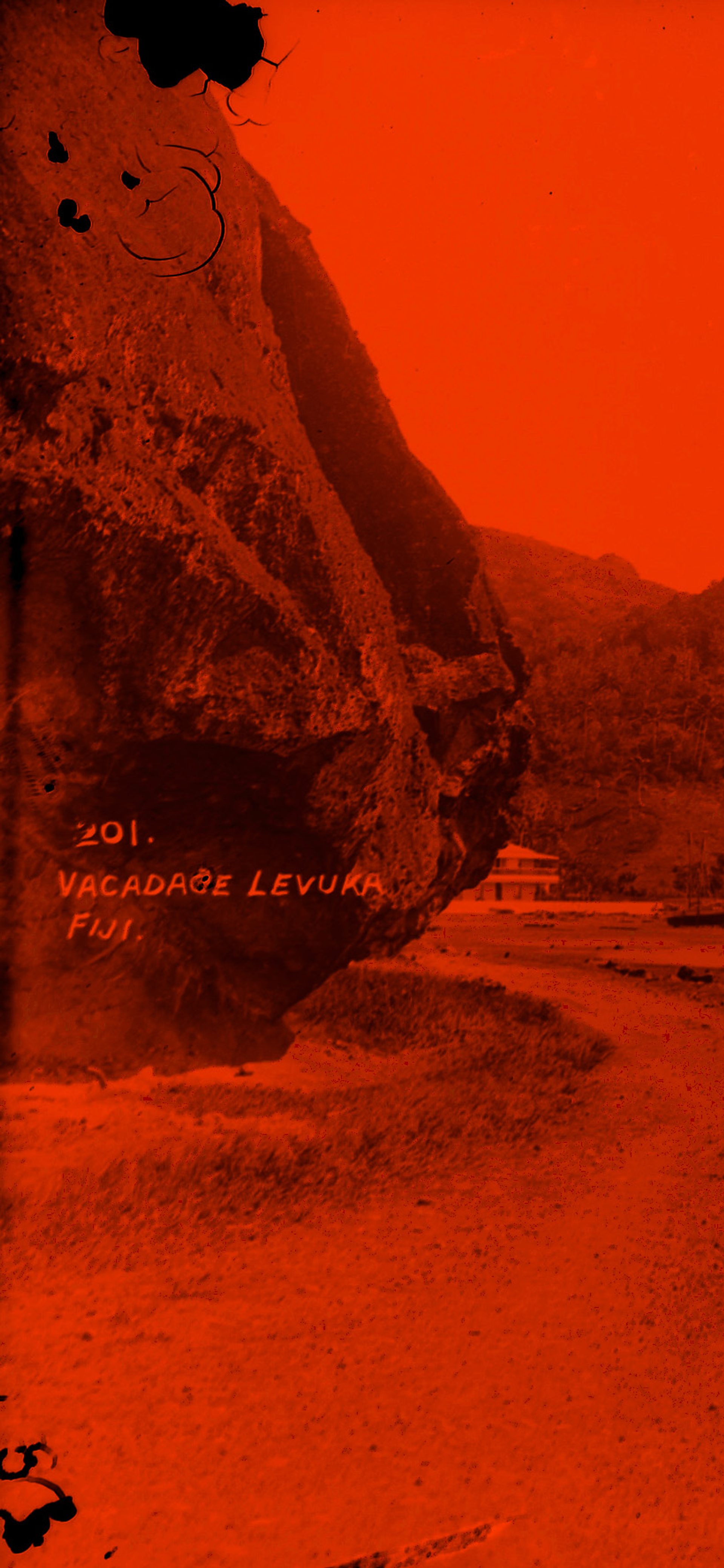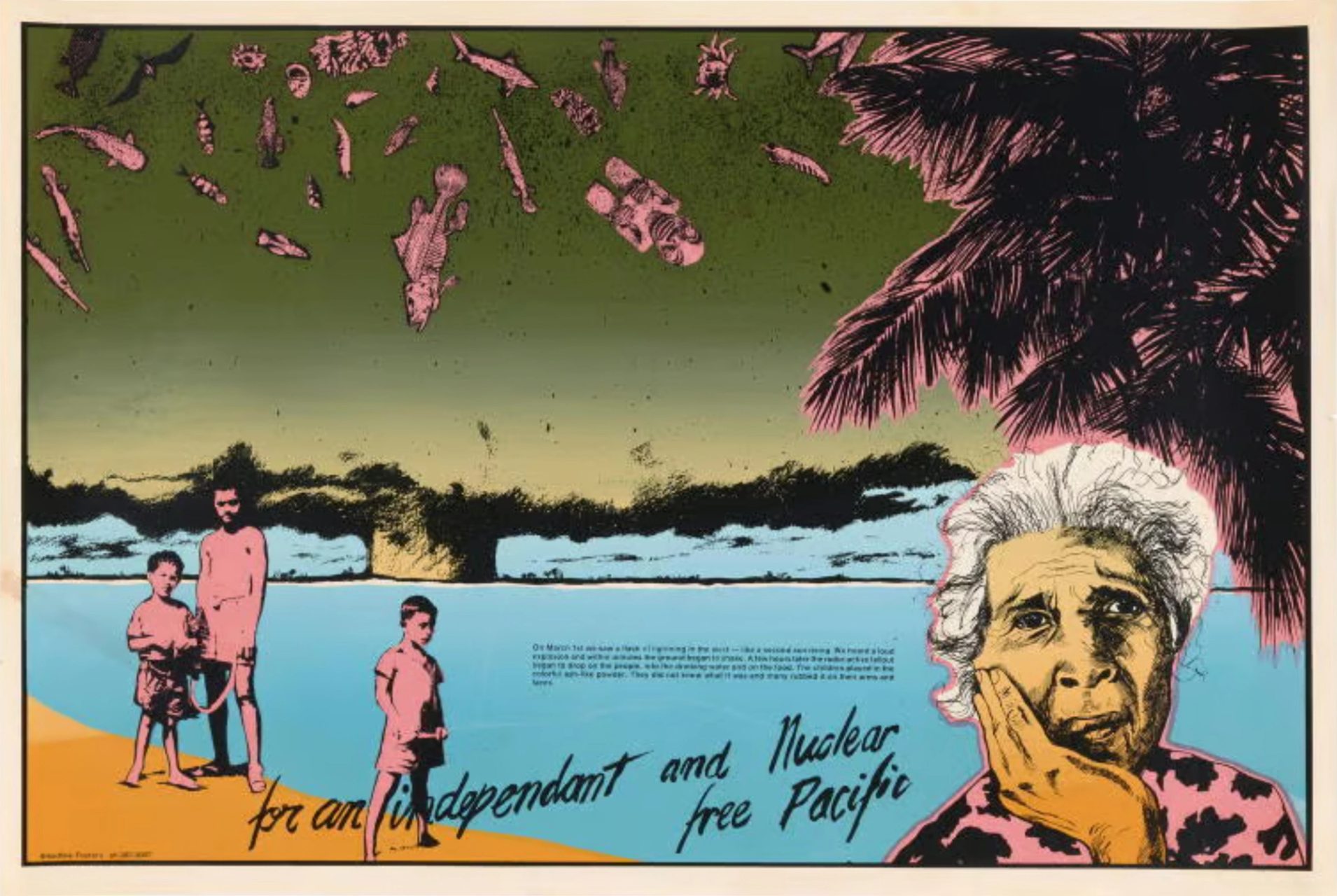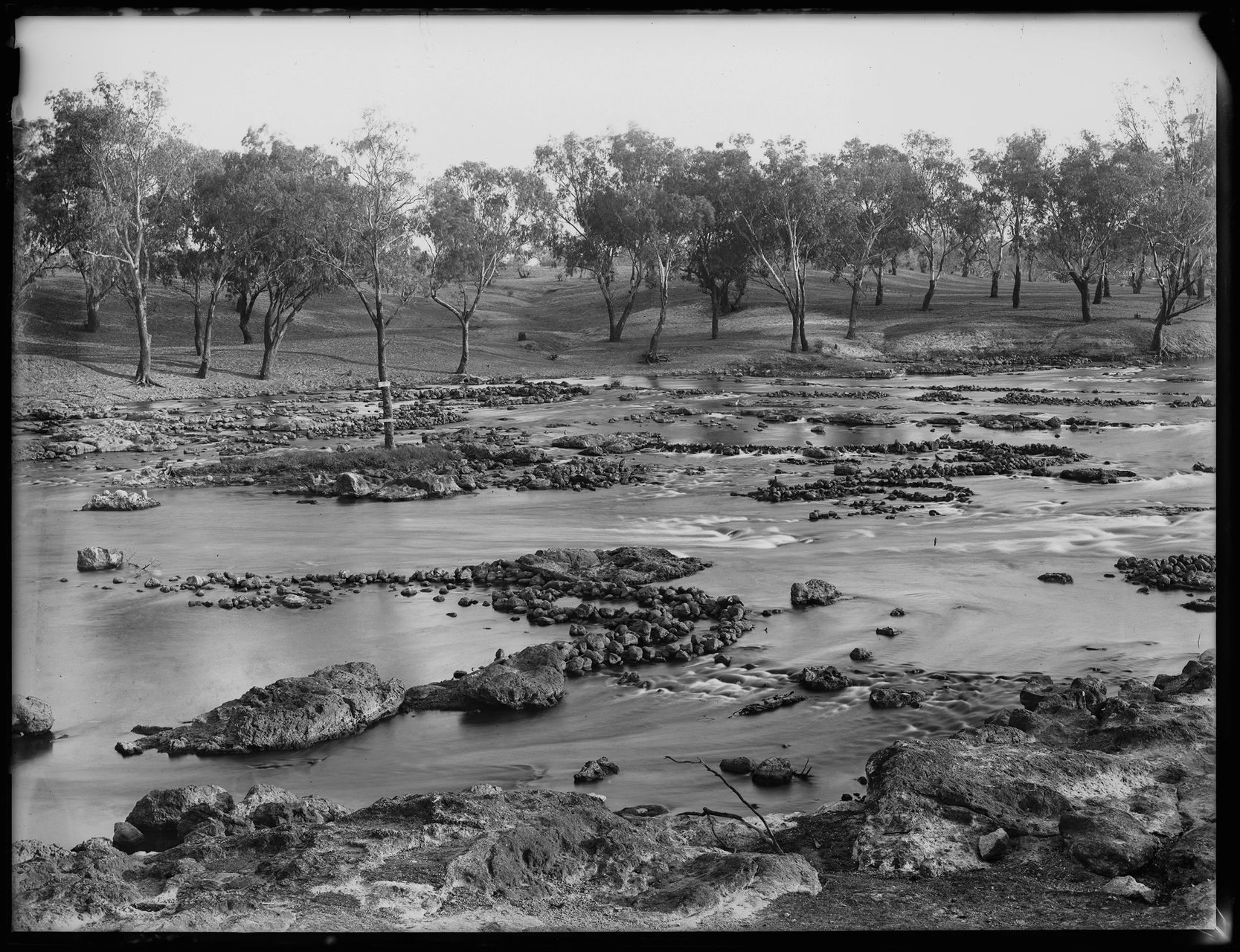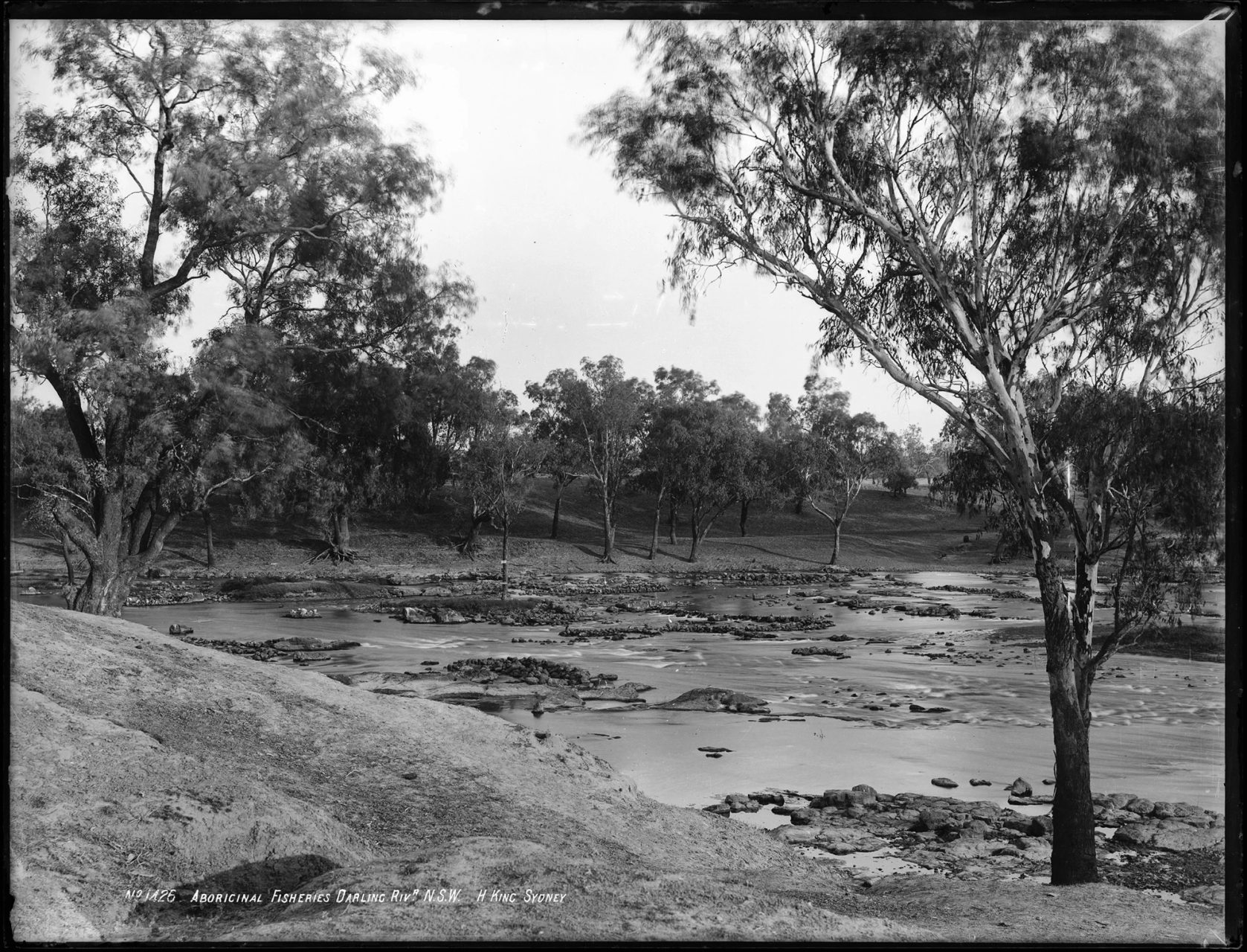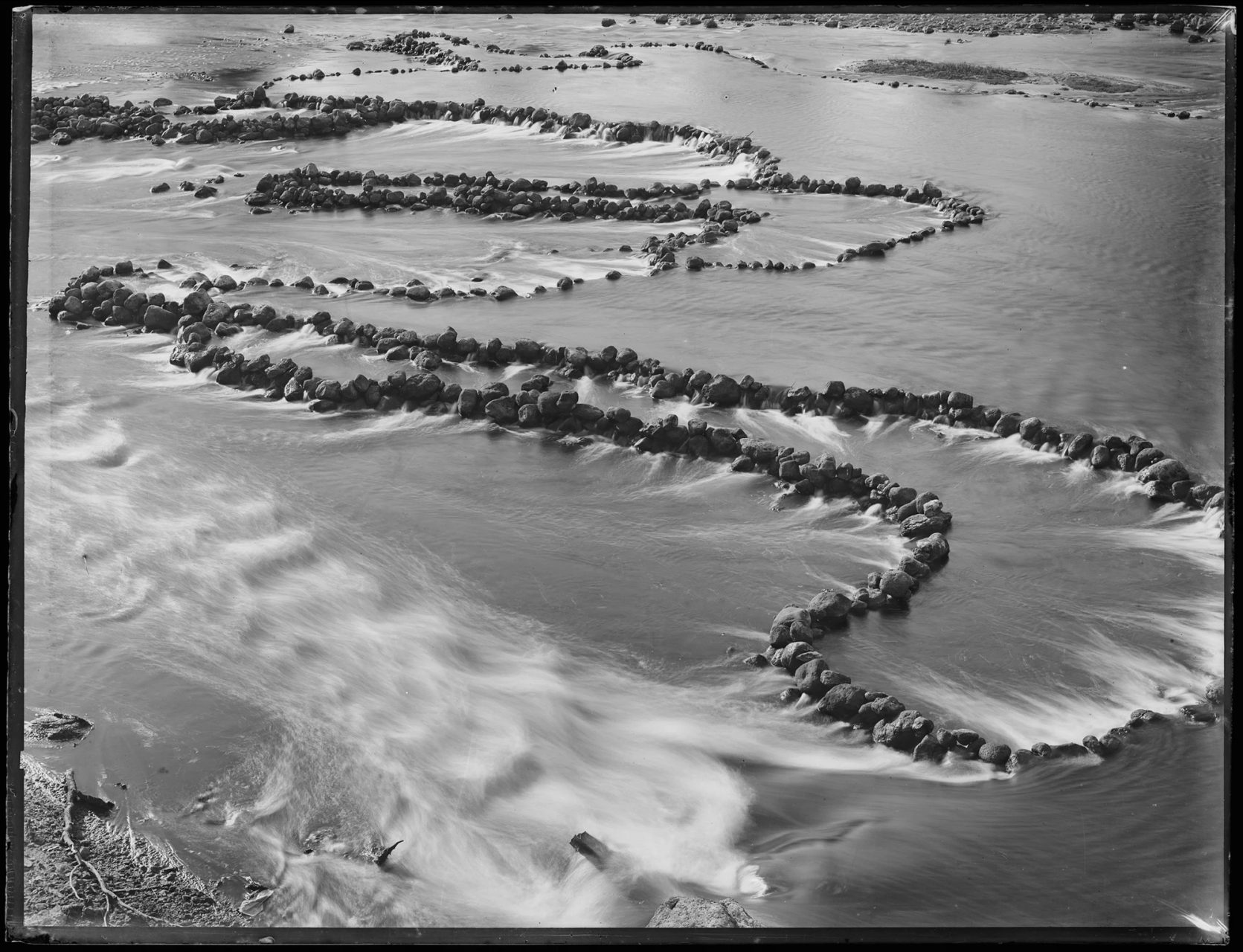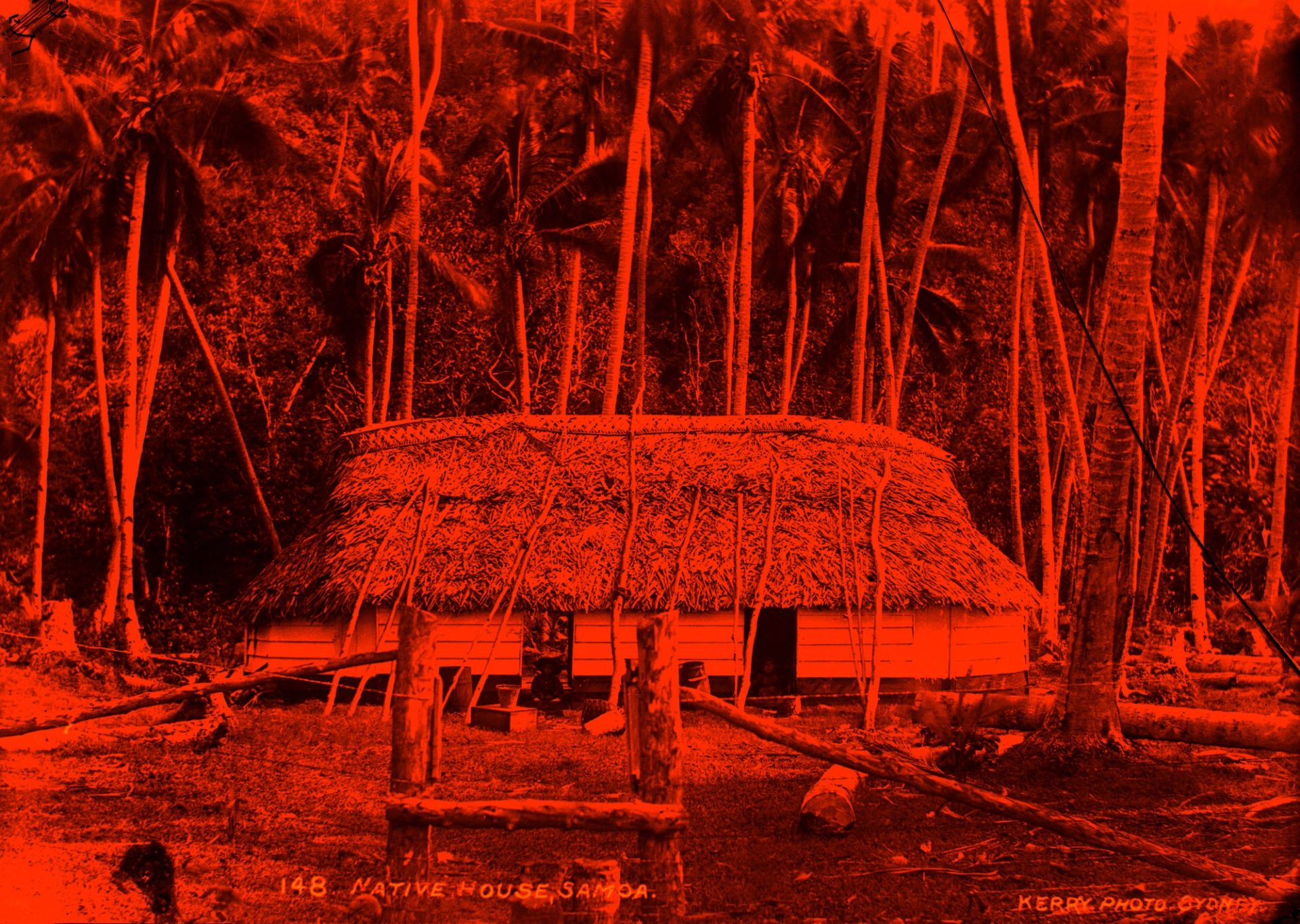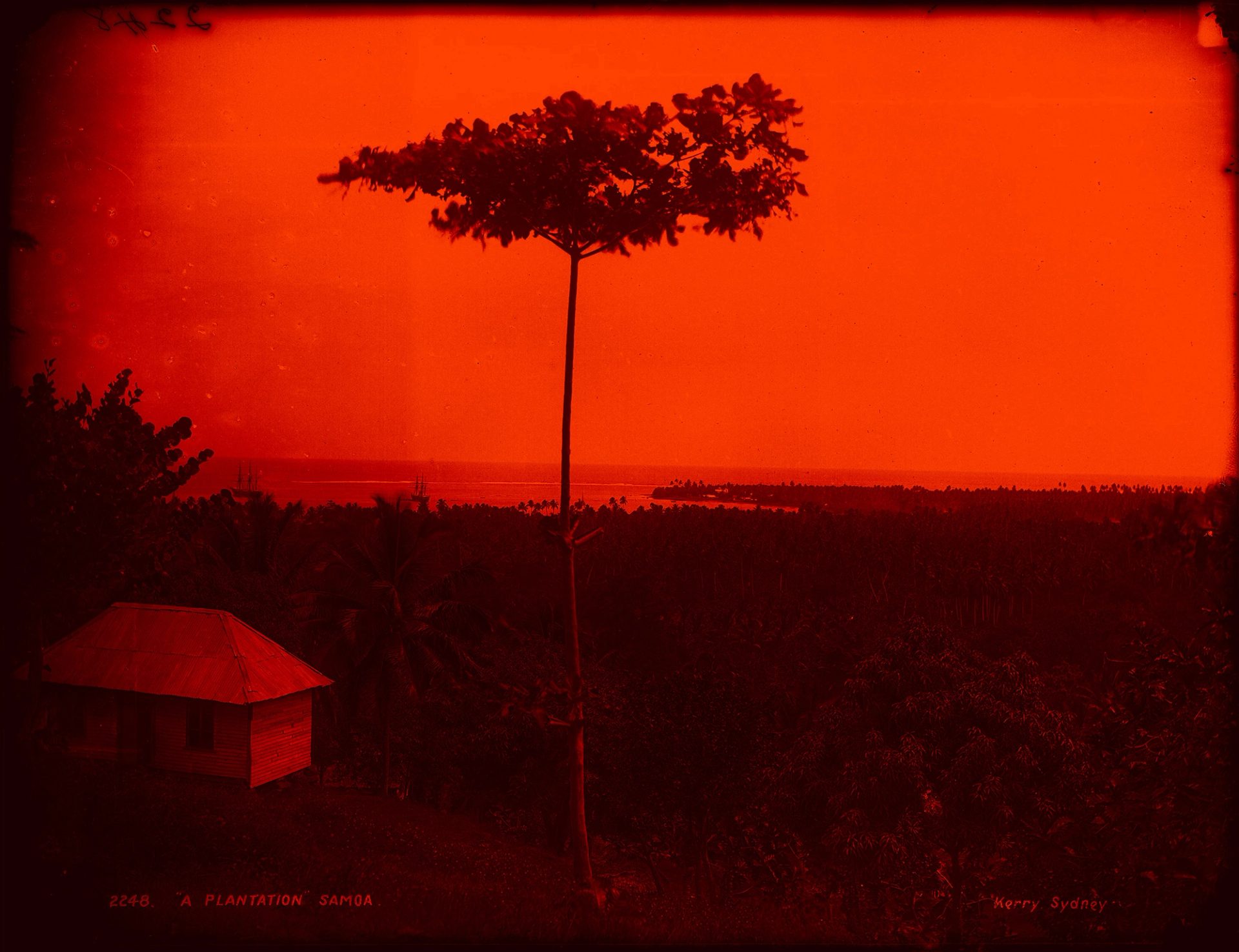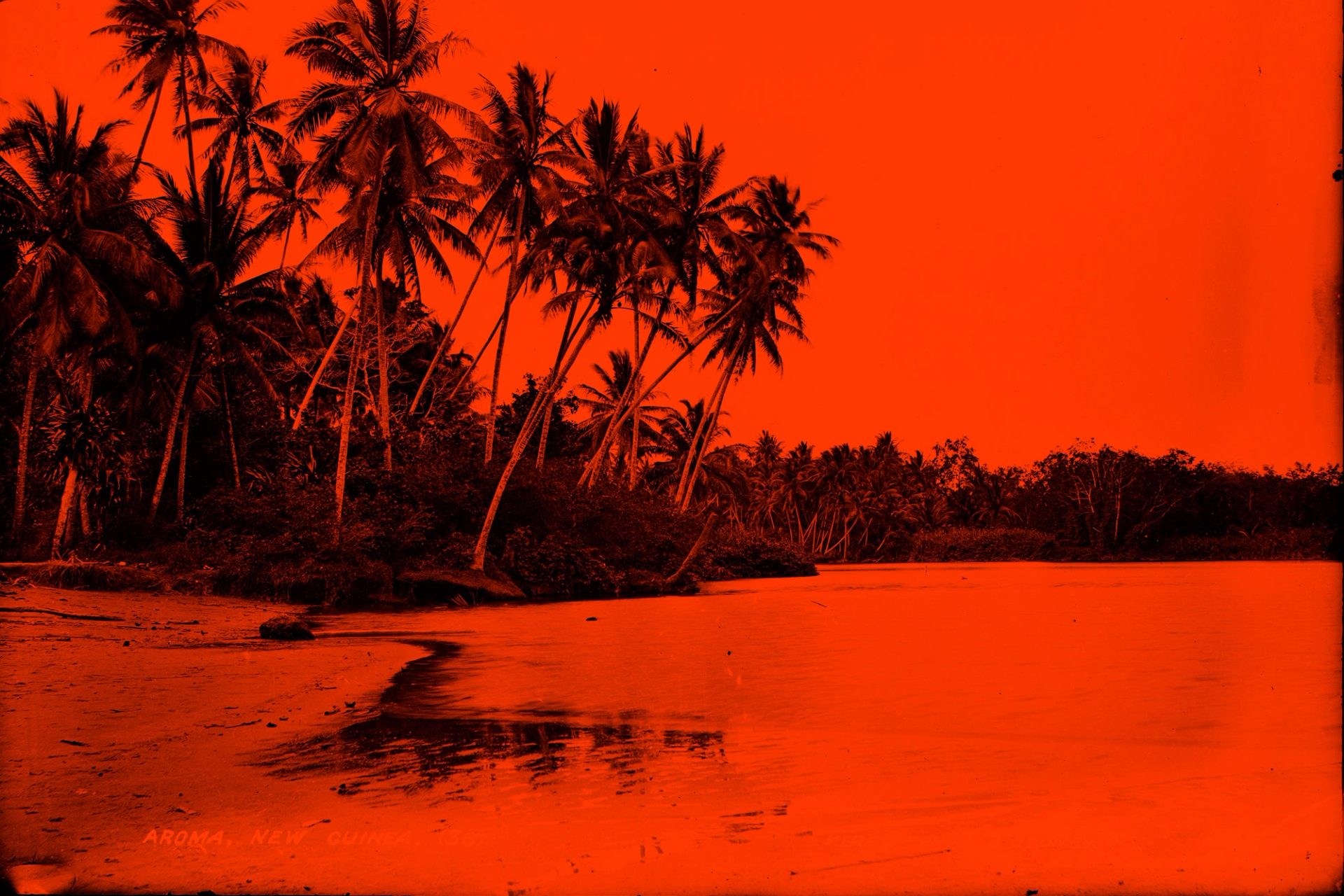Queering Climate

Faʻafafine, faʻatama, trans and queer peoples are disproportionately affected by natural disasters and the wider effects of climate change. This talanoa explores the overlap between the climate and queer movements, and their interconnected struggles within small island environments.
Read and listen to provocations by Professor Katerina Teaiwa and excerpts from the responses of Yuki Kihara, Fagalima Tuatagaloa, Alofipo Fleur Ramsay and Tammi Gissell.
Professor Katerina Teaiwa
‘I'm interested in where the opportunities and possibilities are for kinships, for solidarities between different kinds of marginalised groups, so that all cannot just find but co-create those spaces and places to speak and to thrive and to live.’
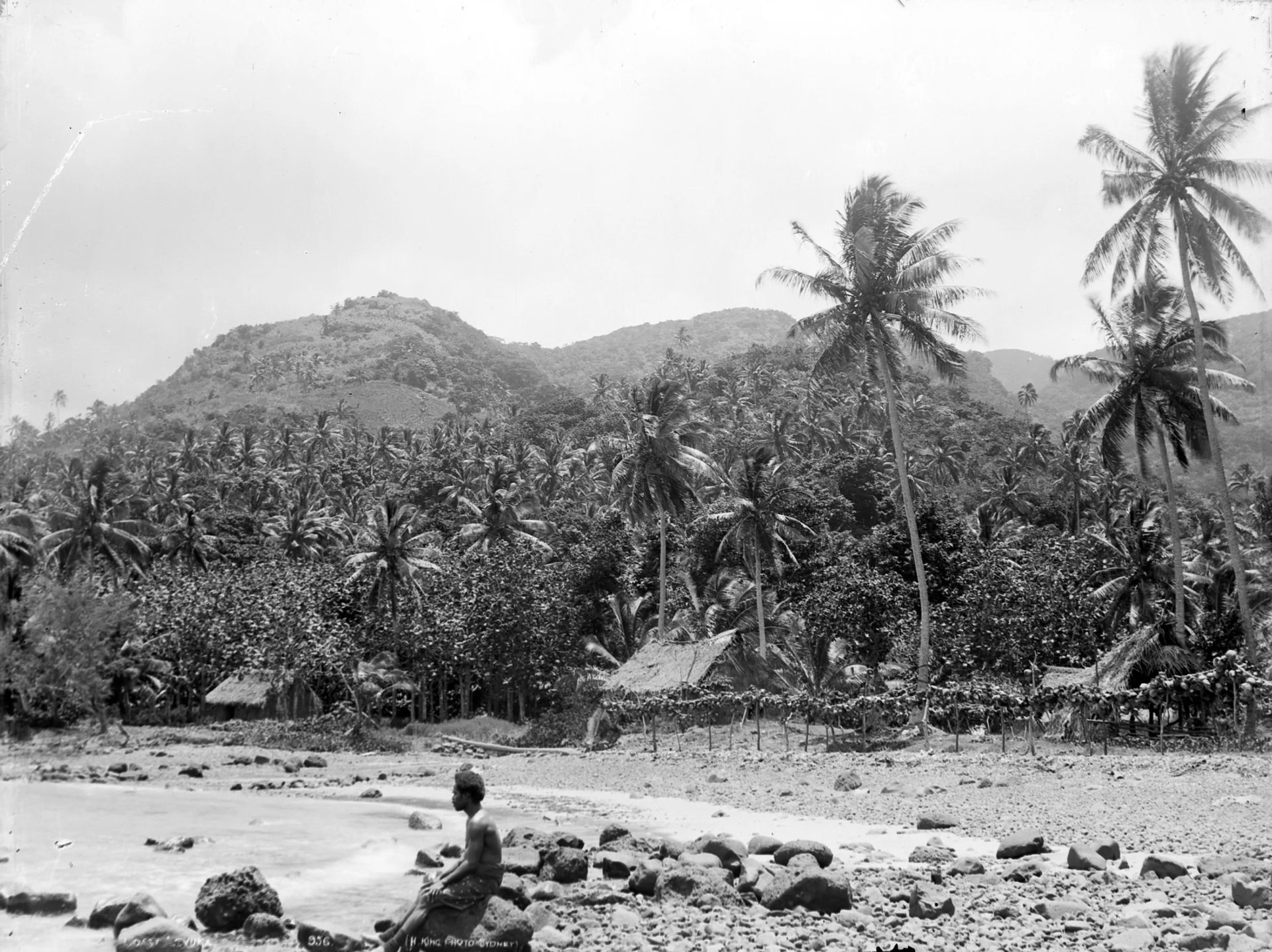
Professor Katerina Ko na mauri, yadra vinaka, ni sa bula vinaka everyone. So, I'm originally, like I said, I’m from Fiji. I was born in Savusavu in the northern part of Fiji. I was raised in Levuka, Lautoka and in Suva. My mother is African American from Washington, DC and my father is Banaban and Tabiteuea from Rabi in the north of Fiji and also from Kiribati.
I've spent most of my life studying how Banabans came to Fiji in the first place, and how our island was mined for phosphate by Australia, New Zealand and the United Kingdom to fuel global fertiliser and farming industries. But as a Banaban and i-Kiribati and Micronesian minority in Fiji, I've always been interested in how people at the margins of state and society navigate and find ways to carve out spaces for themselves in challenging contexts.
So, to help focus my role, Yuki shared with me her definition of the term 'to queer' or 'to be queer,' or 'to queering' that is taken from bell hooks. And bell hooks wrote about queer as, 'Being about the self that is at odds with everything around it and has to invent and create and find a place to speak and to thrive and to live’. And that is something certainly that many displaced and marginalised communities can relate to. But we can only take those similarities so far, depending on the context. Banabans, for example, completely fall through the social, political and economic cracks in Fiji and Kiribati. Often, they're put in the too hard basket legally, politically, in terms of policy and from a customary or traditional perspective. So do LGBTQI communities, especially structurally, but sometimes for quite different reasons. I'm interested in where the opportunities and possibilities are for kinships, for solidarities between different kinds of marginalised groups, so that all cannot just find but co-create those spaces and places to speak and to thrive and to live.

To help us with today, I want to propose two kinds of provocations or sets of things to think about. I was quite close to one of the personalities that is featured in Paradise Camp, Seuli Allan Alo Va'ai, or Allan as Allan was fondly known – and I will say he, because Allan was happy to be identified as he, but also changed his pronouns depending on the context, so was actually quite fluid and flowed through many, many different contexts – and expressed himself as he or she or mama when Allan needed to.
I first met Allan about 26 years ago and we proceeded to found the Oceania Dance Theatre at the University of the South Pacific. And we danced together for years and years. Allan was godparent to one of my children, and he became one of the most beloved personalities and the most widely recognised personalities across Fiji.
Allan was so fluid, dynamic and agile, working all aspects of gender primarily in order to serve and empower others better as a powerful advocate for the arts and the environment. Losing Allan in 2017 was a big loss for Sāmoa, for Fiji and for the whole Pacific.
Reflecting on a life like Allan's and many of the other issues around the importance of fluidity of identity and gender, the reach of different kinds of personalities in the Pacific, and the kind of service that they give back, what are the historical and contemporary factors that have led Oceania to become a less fluid space? Not a more fluid space, because we always assume we are a fluid oceanic continent. What are the factors that have contributed to Oceania becoming less fluid? What critical questions do we need to ask of custom – what they call tradition, traditional culture? What critical questions do we need to ask of specific forms of Christianity, capitalism, colonialism, these labour mobility systems that are constantly being pushed on our people? The kind of education systems we exist in? The geopolitics? Everything that makes Pacific Islanders less rather than more tolerant of fluid creative identities and roles. How does such intolerance or marginalisation play out in times of crisis?
My second, slightly more long winded one comes from the Pacific Studies context.
I've been at ANU – like I said before, academic and teacher – for about 16 years, but I did my PhD at ANU from 1999 onwards, and I established Australia's only Bachelor's degree and major and minor in Pacific Studies. And we struggled for years to get just a handful of students into our classes. Believe it or not, not even Pasifika students wanted to do Pacific studies. But in the last few years that has completely changed. We have not just doubled, not just tripled, but quadrupled the numbers of students in our classes. Why all of this interest in the Pacific?
So, a few years ago, a few colleagues and I dubbed these recent things that's been happening in the Pacific, where certain distinct moments have started to collide in the 21st century in an unprecedented way. The things that have collided or all come together, which ramp up the interest in the Pacific are, one: the securitisation of Oceania, an intensified securitisation in the context of the re-emergence of sea power and maritime domain in renewed great power rivalry. It's causing the Pacific to become more valuable and more strategic. There is nothing like the word ‘nuclear’ to make Pacific Islanders feel less secure.
The second one is the blue economy in Oceania. And that's an intensification of efforts to exploit, commodify and enclose the Pacific Ocean's natural resources, often in the name of conservation. You can sneak in deep sea mining into this space as well. That's what happens when the blue economy kind of rises to the surface.
The last one is resistance. In Oceania, Indigenous-led activism and resistance to the moves to securitise and commodify the Pacific Ocean, and an assertion of oceanic identity and stewardship in regional and global processes of governance, especially on matters of climate change.
So, all of those things are coming together in this moment, and they're increasing the rush for Oceania and the interest in Oceania.
What all of this does represent is a long-standing impetus for what the late Fijian scholar Simione Durutalo described as, 'Nuclear imperialist powers, profiting from myths of floating South Sea paradises.' Durutalo, whose work appeared in a book about confronting the legacy of the famous anthropologist of Sāmoa, Margaret Mead.
In his chapter he actually talked about how both transnational tourists and nuclear imperialist powers benefited from the construction of South Sea island paradises – what my elder sister called ‘the militourist complex’. The figures inhabiting such paradises are not Melanesian or Micronesian, but Polynesian. All constructions of the European imagination, but nevertheless referencing real islanders in real places. The Polynesian body gains visibility in this context, while inhabiting a paradise where militarists can get some rest and relaxation or test their weapons of mass destruction.
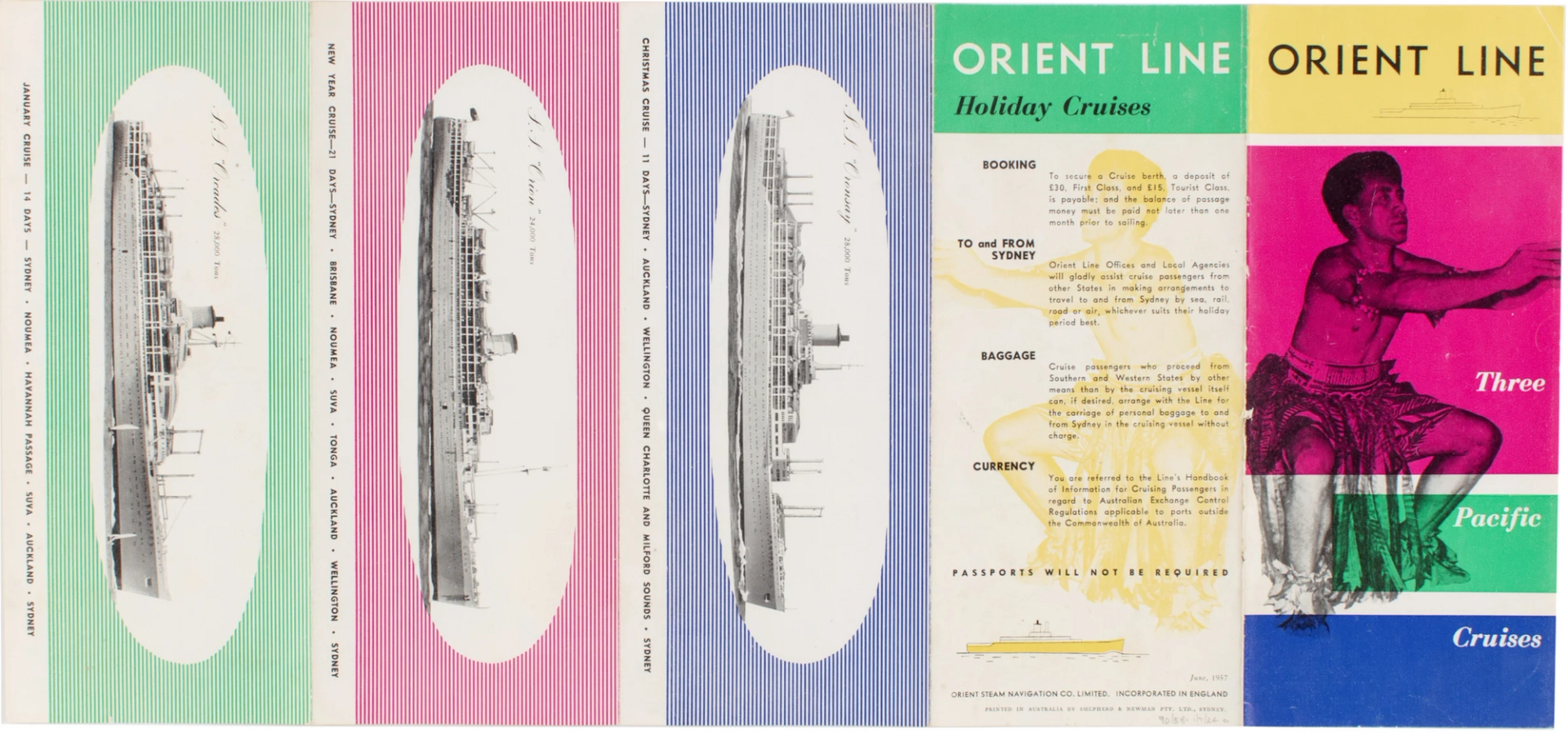
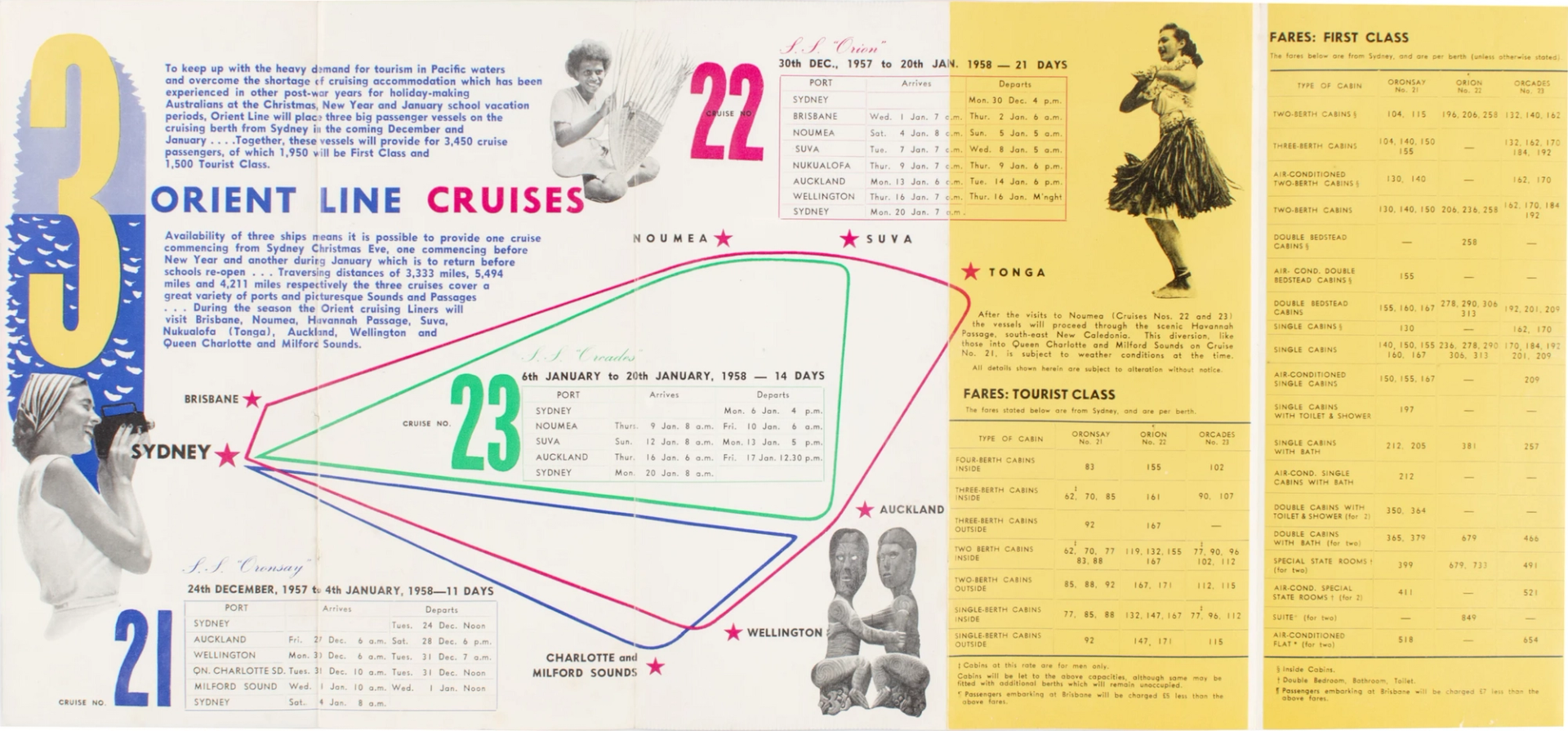
So my final provocation, just to bring all of that together, is what are the intersecting, and indeed quite similar ways, in which the powerful concepts of paradise – which include that of the Polynesian body and the discourse of climate change – how do these two big discourses that are filling everybody's time and imagination, actually dominating and invisibilising other people's places, narratives, problems and issues in the Pacific?
Both the Pacific and the climate change space are now super, super crowded, super saturated with competing interests, imaginations and activities. And in the meantime, the legacies of colonialism, extraction, nuclear testing and patriarchal Christianity go unchecked. Paradise and climate change have a way of taking up a lot of oxygen, so that there is little else left for the policy or imagination.
What is left out of the picture when paradise, the Polynesian body and climate change take centre stage? When they're on centre stage, what can't you see?
How can we explore this question without resorting just to representational or assimilationist politics?
How do we make spaces for everyone in bell hooks words, 'To speak, to thrive and to live?'
And those are my provocations for today.
Yuki Kihara
‘I believe that the reason why Sāmoa has sustained as a resilient community over the last 4000 years, because all of the four genders worked in unison.’

Yuki Kihara Talofa lava. Morning everybody. I would like to share with you the creation story of Sāmoa, as documented by Reverend John Stair in an account that he published in 1897.
'On the formation of two bodies being complete, they lived, but were both males, and dwelt on the land in which they were formed. One day, whilst fishing with a net called the faamutu, one of them was injured by a small fish called the lo, which causes death. Upon this, Tuli returned to the skies and bewailed the loss of one of the inhabitants of his land to his father, when Ngai-tosi was directed by Tangaloa to proceed to the earth to reanimate the dead body; previously to which, however, he changed the sex of the deceased male to that of a female. The two then became man and wife, the parents of the human race.'
I share this story because a lot of the fluidity that Katerina was talking about in her provocation alludes to the four culturally recognised genders in Sāmoa.
So, we have tama, which is a cisgender man; fafine, which is a cisgender woman; faʻafafine, which is made up of two compound words: faʻa meaning in the manner of and fafine, meaning woman. So, when you string the two words together, it means faʻafafine, in the manner of a woman; used to describe those like myself, biologically assigned male at birth, who express their gender in a feminine way. And we also have faʻatama, or in the manner of a boy or a man; those assigned female at birth who express their gender in a masculine way.

So, although we are four culturally recognised genders, we are not legally recognised. And part of the reason why we're not legally recognised is through a series of religious indoctrination and undergoing two colonialisms.
In particular I would like to highlight the Crime Ordinance Act of 1961. So, on the eve of our independence, the New Zealand Colonial Administration introduced Crime Ordinance of 1961, which introduced two laws that directly targeted the faʻafafine community. One was the ban of impersonating a woman by any male in public, and the second was homosexuality, and so anybody that was caught breaking these laws were fined and imprisoned up to six months.
Thanks to the effort of the Sāmoa Faʻafafine Association – and I'm really honoured to have the vice president of the Sāmoa Faʻafafine Association with us, who's going to be the preceding speaker here – they were able to work with the government to abolish the female impersonation law, but the government remained with the homosexuality law.
So, homosexuality is by law illegal in Sāmoa, however it's not enforced, but because it's not enforced, that doesn't necessarily mean that faʻafafine or faʻatama community are off the hook. And I believe that a lot of the times that the discrimination that surrounds the faʻafafine, faʻatama Sāmoa community, I think, tend to have to do with this law that still exists and yet not informed, but it kind of allows people an excuse to discriminate against the community. And one of the areas that I kind of feel like the faʻafafine and faʻatama community are discriminated is in the climate change space.
What often happens is that when Sāmoa goes through a natural disaster there are people who go into disaster areas that do conduct surveys, and they're often surveys that are conducted by NGOs and local government people who actually go into disaster risk areas and then interview people about how they're feeling, how they're going to recover, what are the assistance they need? And these are often surveys that are conducted that are framed under the Western binary gender framework, or men and women.
So, I believe that the reason why Sāmoa has sustained as a resilient community over the last 4000 years, because all of the four genders worked in unison. We all worked in unison until colonialism came in, and evangelical Christianity came in with their Western binary gender. That set off the imbalance that prioritised the binary genders and excluded the faʻafafine and faʻatama. I feel that as Sāmoans and as a nation, we really haven't fully exploited the potential of what Sāmoa could be because all the four genders are not working in unison, right? And particularly in this climate change space where there is a lot of issues about equity.
So, with that in mind, what I did is that I worked with the Sāmoa Association and the Pacific Climate Change Centre to put together a climate change workshop specifically for the community as a way to build their resilience in mitigating the changes in the environment.
Fagalima Tuatagaloa
‘Gender is still confused by many people in Sāmoa – sex and gender. When we try to identify and to tell them that they are four genders in Sāmoa they say, 'What?'’
Fagalima Tuatagaloa Talofa lava and warm welcome and greetings from myself all the way from Sāmoa. As Jioji would say, I'm also a former queen, two consecutive years. Wow!
So, this is about Sāmoa. We are made up of two big islands and then the very small islands. But I wanted to let you see that with these big islands, we have our traditional districts which were there in the beginning, and from these traditional districts we were able to establish a traditional sister clubs with all these traditional districts, like, for example, in Tuamasaga on Upolu island, we have two huge active clubs there, Fongafale Vaimauga. We use the names of the districts to encourage and to give us hope. And even in Savaiʻi it's growing, and we are hoping that there'll be more and more other sister clubs established in the island of Savaiʻi.

With our Sāmoa Faʻafafine Association we just established in 2006, we started off with health and education issues pertaining to discrimination and stigmatisation of our community because of the HIV and AIDS epidemic. But then as we grow, we see that there’s other areas that we need to also cover. And so, we have these four key concepts of thematic areas in which our mother association, SFA, have four subcommittees representing our Faʻafafine’ Association in national, local, regional and international arenas.
So, we have gender inclusive and developments. We have environments and climate change. We have human rights, justice and law, and we have health and education. Our priority now is to do with environments and climate change because we see Sāmoa joining Tuvalu, where climate change is real, where climate actions are happening and where climate justice is a concern as well.
Because if we see a lot of policies being developed and a lot of consultations being conducted, we are integrated into the process, into the systems of consulting. However, when people talk about inclusion, social inclusion, we are not mentioned on the policies. So why are we wasting our time doing this? This encourages us to be brave, to stand up and make our voices heard. We need to educate our community in terms of climate change. We need to educate them about adaptation, mitigation and everything to do with climate change.
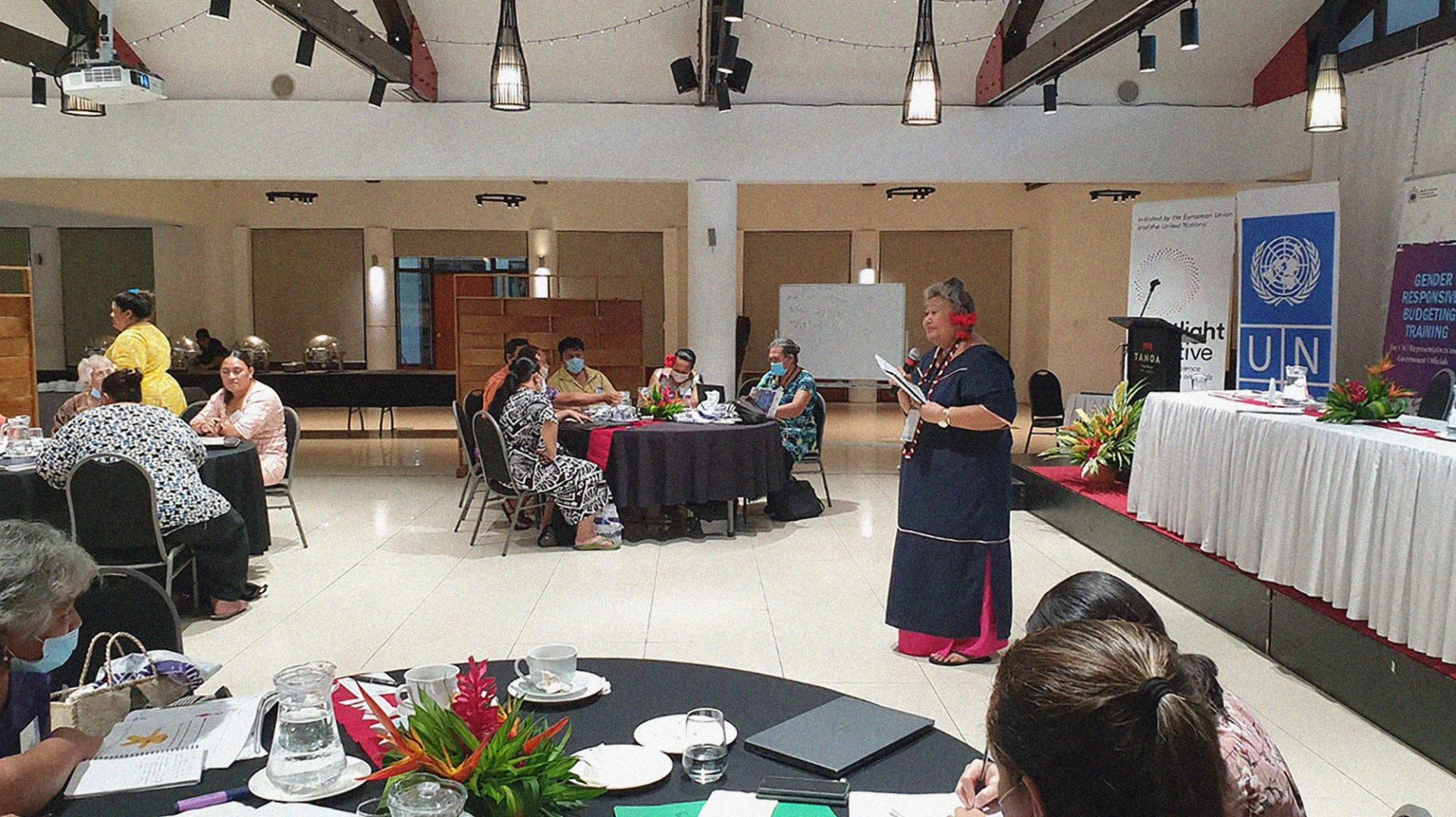
And this journey grows when we were being invited to present in this high-level dialogue on clean, healthy environments in 2022, where I presented on how some of our association work can together – with the governments of Sāmoa and all its government ministries – be able to have a very healthy and clean environment for our community. It was a great success that finally our governments hear us and it was a success as well when the government and the parliamentarians talk about LGBTQI.
I think they knew it way, way before, but they can't speak because they hide their feelings, or they are afraid to talk because it goes against their culture and religious beliefs. Hello.
And then we come to national climate change and gender strategy that just happened recently, where we were being also consulted and being involved in discussing issues about climate change and gender strategy. Gender is still confused by many people in Sāmoa – sex and gender. When we try to identify and to tell them that they are four genders in Sāmoa they say, 'What?' Hello again. I think you didn't read your history. And within this gender and climate change strategies, we were able to see where we can fit in, in terms of strategies, the activities and how we can assist our governments and our community to be a better climate change and gender champions in the Pacific.
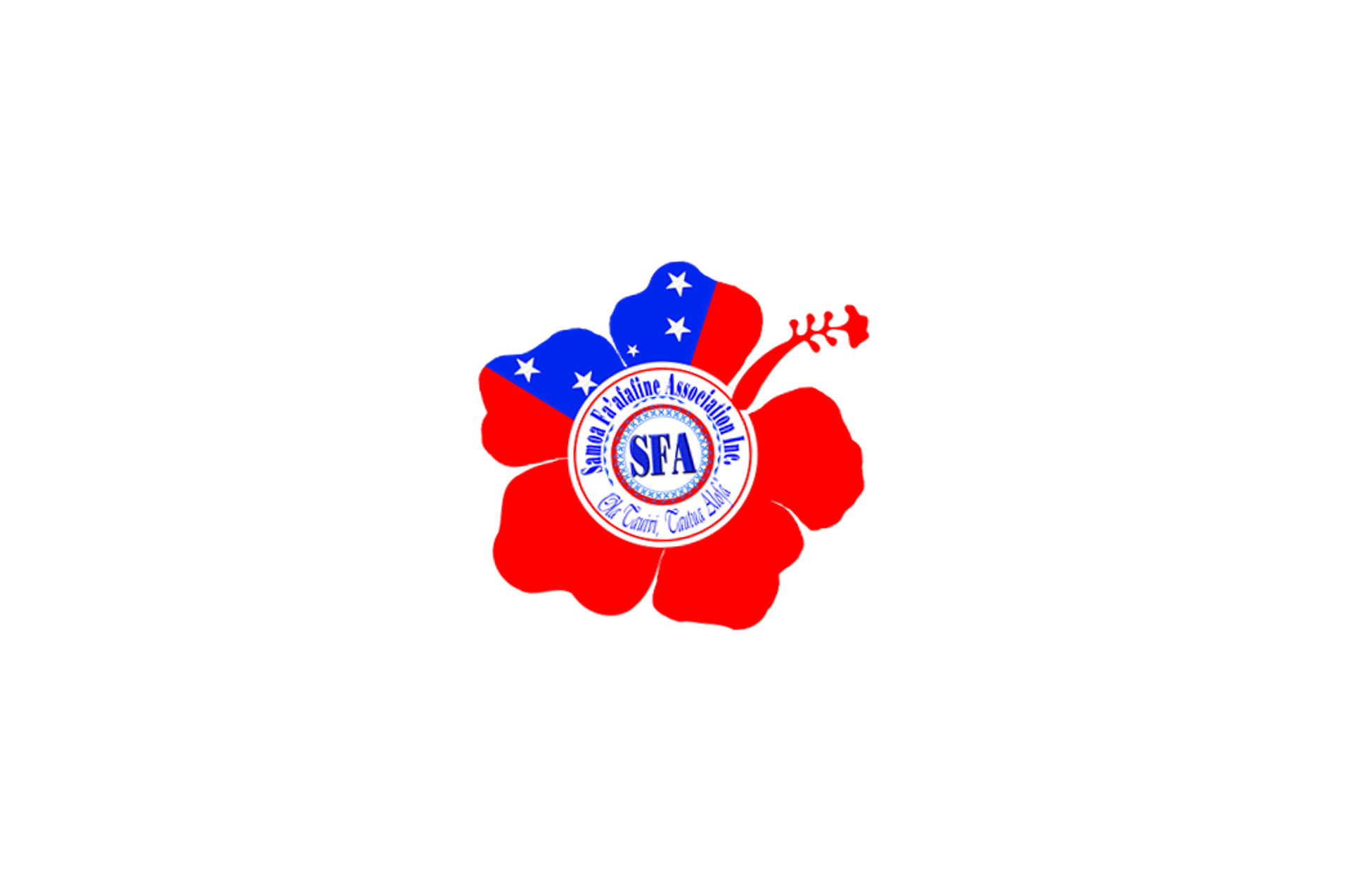
And lastly, we were also part of this gender responsive budgeting core group training, where we try to mainstream gender into budgeting in governments. And some of our faʻafafines sit in this core group to make sure that our budget is gender balanced. But we're still fighting. We're still facing impacts as well. Impacts of exploitation integrated into the system but not recognised in policies and legislation being excluded. In the beginning, we were never part of this consultation about climate change, about gender policies, about gender equality, violence. You know, we're still facing with these issues discrimination and homelessness as well. But these are the ways that the governments and SFA will really like to work together in terms of climate change actions. We need our recognition because if we are not recognised, we will never be happening. What we are trying to do for the better of our community, the integration of gender obligations into climate actions, skills, knowledge and expert sharing, our shared responsibilities and government support.
And why are we doing all this? Because we are citizens of Sāmoa, we are people of the land, tangata whenua, whatever you call it. Climate change is everyone's problem, and as I said, responsibility and even environment and gender equality. We are the very aggressive, very vocal activists in our community in ensuring that when we talk about our environment, we are also considering gender equality. And lastly, you know, we have this slogan, Ola Tauivi Tautua Alofa: we always reminded our community that we need to strive to empower our livelihoods, but at the same time serve with love. Fa'afetai lava.
Alofipo Fleur Ramsey
‘As queers, we are irreverent when it comes to power, and I think that actually that's a very important skill to have in thinking about some of the structural drivers that are causing the climate crisis and also connecting them to the way they may interact in relation to sexuality.’
Alofipo Fleur Ramsey You might note there was an absence of mentioning that I'm queer in my bio and I am queer. And the great thing about this event is it's actually forced me to think about how my queerness interacts with being a Pacific person, and whether my decolonial approach is also influenced and informed by being a queer person. And I will come back to that hopefully in the discussion. But I did want to discuss tentative links between queers, climate change and Pasifika.
And I think the first link that I wanted to make was to talk about the discussions that have already happened in Sydney in relation to this topic, and the influence for that is DIVA for Equality in Fiji. I'm not sure if many of you know about that organisation, but it was founded in 2011 by ten lesbians, non-binary and trans masculine people, and they have a very sophisticated understanding of all the intersections between climate change and queers.
The second kind of link that I wanted to raise is what comparisons can we make between queer and climate movements? As queers, we are irreverent when it comes to power, and I think that actually that's a very important skill to have in thinking about some of the structural drivers that are causing the climate crisis and also connecting them to the way they may interact in relation to sexuality. But I do think it's a powerful position to come from, if you are defiant of God's law from a Christian perspective and the law of nature by being queer, it just sets you up for being able to think through the way that power operates.

I think climate movements aren't as good at thinking about the root causes of the crisis, and I think that also means that part of the solutions to the crisis are green capitalist ones, which actually just don't do anything. So, an example would be carbon trading, which has done nothing to reduce emissions, and also now carbon capture and storage. So, we're being sold false solutions. It would be great if climate movements had much better and sophisticated understanding of the structural drivers.
We're also good at combining protests and partying. I think this is very important. It's extremely important to get people hopeful and out there. But I do have to say, I think Pacific people are also really good at this because the best climate protests I ever went to was the Newcastle blockade, where the Pacific Warriors came out and they had a band on the beach playing Bob Marley. And I had a white friend with me, and he turned to me and he goes, ‘Is this a protest or a party?’ And I was like, ‘It's both’. That's pretty amazing in relation to other connections.
So, what can our Indigenous reference – so, creation stories or custom and law – tell us about queerness and climate movements? I've been heavily influenced by the Sāmoan paramount chief Tui Ātua Tupua Tamasese Efi and he talks about our Indigenous reference and the way that we think about ourselves and our own terms. And one of those he talks about is the fact that in our theological Indigenous reference, we have a supreme being, Tagaloa-i-le-langi, and he often talks about that supreme being as neither male or female, or both male and female.
But the more important and interesting question that I wanted to ask, and it was raised in Yuki's presentation, is that Sāmoans are, in a sense, created by a bird. And so, what does that mean in terms of gender if we're created from a bird? So, we know ecologically it's got some really important significance. One is we're younger as a species, we're not dominant on the hierarchy and we also have ancestral relationships with other beings. It seems to me that gender becomes a really interesting thing to think through if you're created by a bird, and then also the colonial process and writing down stories has been a very political one. So, there are very different stories in our traditions in relation to Tuli, and that's just one of them.

What place does queerness play in climate justice? It's quite interesting. Mainstream environmental law firms, I think, don't think through the dynamics of bodies and what bodies they're representing and who they're thinking about. They're only just new to actually including Indigenous people. So, there's now been Indigenous led programs created in law firms and I've been part of that process. I pushed for the creation of two Indigenous law firms at a mainstream environmental law firm. But part of my advocacy was also trying to bring a gender lens. And I think also now we need a queer lens. They just don't think in those terms.
So how does a gender lens make a difference? Well, for example, with the missing and murdered Indigenous women in Canada, one of the things that they found – and this is very marginalised understanding, unfortunately, but it's a really important one – is that extractive processes cause violence within communities, but also bring violence to communities. For me, I'd be very interested to think through what a queer climate litigation would look like. As I said, I'm really sure that being queer has had such a kind of pivotal impact on my lawyering, but it's not something that I can really say that this is what it is.
Just very briefly to finish, because I think it's also really important; we're facing the fascistic turn. And obviously that's happening in the US. It's also happening here in Melbourne. Council had to cancel a drag story time because of threats from neo-Nazis. This is really interesting work that's been done on hetero masculinity. And so, it's not just about question of energy; how do masculinity, how does queerness interact in terms of the fascistic desire to keep burning fossil fuels? Thank you.
Tammi Gissell
‘True flooding is natural. True flooding is queer. For to queer something is to simply take another course to where you need to be. Queering is a natural part of surviving in and on Country.’

Tammi Gissell Ngarin marang, good morning everybody. My name is Tammi Gissell. I'm from out in Bourke, which is northwest New South Wales. It's hard living out there; hard, hot and dusty. I was born in the summer of 1978 on a really hot, sizzling Sunday morning.
This is the Barka. This is the river that my dad promised would always take me home. I spent half of my childhood probably more down at this river. All of the kids down there, we practically lived there. And there were only two rules: don't ever swim alone and look out for the Mundaguddah. It's customary for my people to go down and put the feet of the children in the Country first, so that the first place your feet are ever put is Country, so Country will know you. And my family always do this down at the river. That's the river where my grandmother grew up in what was called the Water Reserve or the Mission in a tent. So, we would go down, we put the feet in the banks and then in the water, and then in the banks and in the water and in the banks, in the water so you know where Country is and Country knows you, but also how to find your way back there. I've only taken my son down to perform this really important custom. And I wouldn't dare take my daughter out there yet. It's a killing field.
Dr Richard Kingsford wrote, he's from the University of New South Wales, he wrote, 'For the second time in five years, millions of fish have suffocated in the Darling River. And this was not a natural disaster – it's our doing.' Connection to this river for my people, named Darling by the colonists, but known in its true name by the traditional owners as Barka, is fundamental to our survival. In times as recent as 2019, Brewarrina and Wilcannia had no water, no water at all in town, which significantly affected Aboriginal communities out that way. And the main reason for this is for siphoning off the water from the Darling and sending it back up to Queensland at a price through the Menindee Weir.
So, what can I do about this? I'm a dancer by trade. Everywhere I go and every step I take there is conscious thought about the way that I sit in space and the way that space sits around me. It's my job to keep stories in me, and to keep them in a state that they can be brought forward and brought back. And that's the same if I'm down the river or here at the museum.
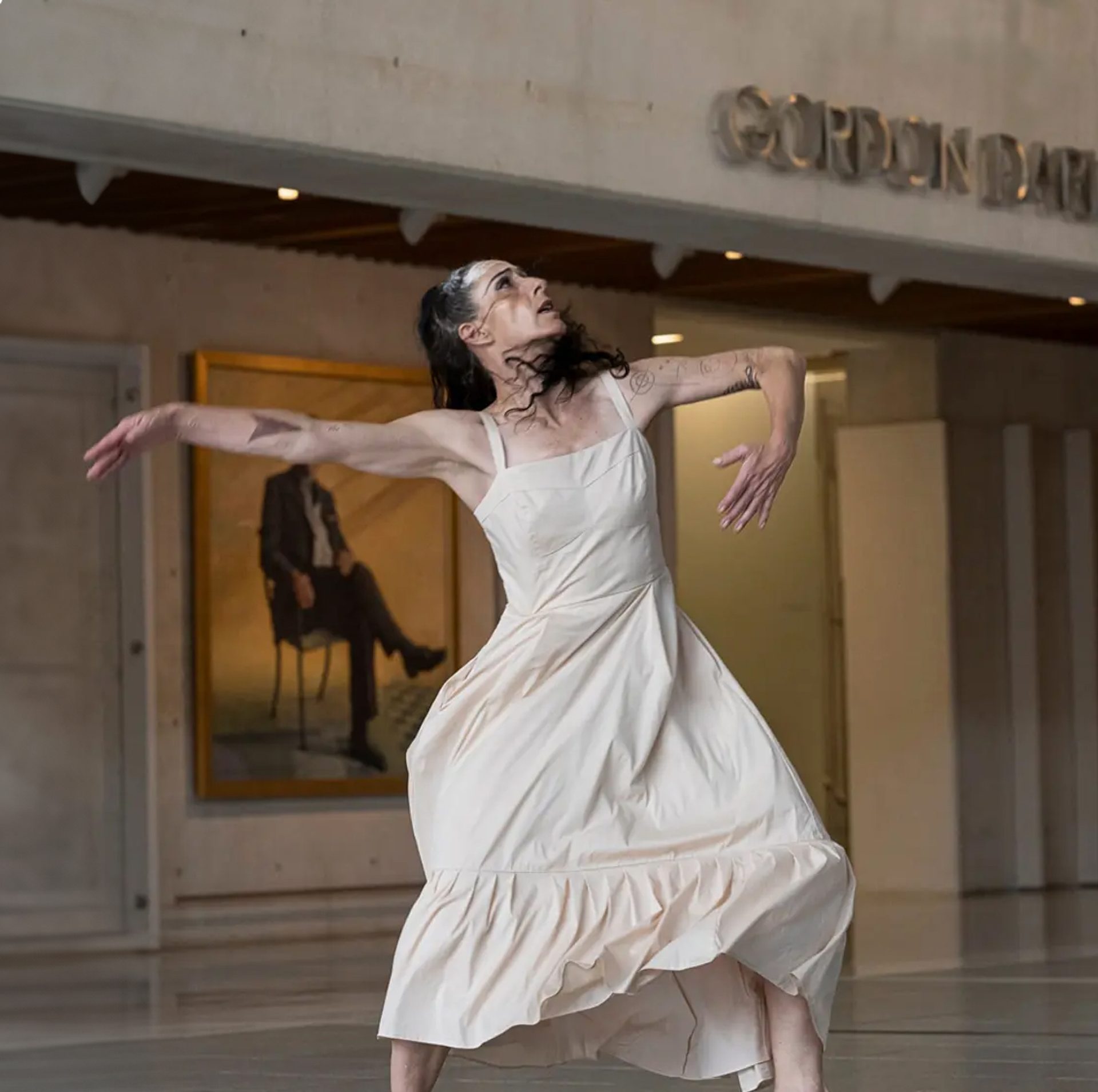
I would have once considered being a Blak, queer performing artist in a white, straight museum a privilege, but I'm increasingly seeing it as an ironic necessity towards setting records straight. We need queer bodies in action. In this sense, I guess we're queering the climate of these colonial architectures by offering alternative courses to the rigidities that they're founded on. I think I've actually come to realise in chewing over this that a healthy climate is already queer. That it's the colonial architectures imposed upon Country, which need to be removed or queered themselves in order to get our climate back in balance. Colonial architectures of the mind, the mental slavery that our brother Bob Marley spoke about in Redemption Song, combined with the stone-cold constructions upon Country, hampers the natural flow of nature. Colonisers have created this accelerated climate change here in Australia, and that's the truth of it.
Can you even imagine a scenario when a fish runs out of air? Now imagine it's 30 million fish twice in five years. The Darling River, the Barka is very sick. Too much of her water is siphoned off and sold for agriculture. And our fish are strong. They're tough, they're resilient. They're used to extremes. But this is just too much. It is the birthright of these fish to swim and live their lives, just as it is for all people to live their lives free of obstruction and damage to their environment and to their lifeblood. We as queer folk are only queer in the sense that we have had to, by necessity, queer off courses laid down by colonist oppressors and their rigidity to dogma.
That's their course they've set. Like the Barka will carve her own course, we will flood and we will drought in line with the flow that we sense to be the right one for our survival and flourishment. And we have to fight for the right of our Country to do the same. Nature is queer as nature honours both the father and the mother. The grand duality and constant ebb and flow through each other, of each other, in each other. Just as day seeps into night and back again. Nature is he, she and they in perpetual motion and interplay. Nature's climate is already queer. People need to queer up to get in on the natural flow, lest they be washed away in the devastation of sticking to a failing course.
Trying to push the river is really, really stupid. The water needs to flow where it needs to flow. The fish need to swim where they need to swim, just as we need to love who we need to love. I reject all attempts to commandeer the flow of our lands and our waterways, and the flow of our bodies, minds and spirits. Here's the Menindee Weir. A guillotine on my mother, the Barka. Climate change is modern manmade. It's a second nation thing. It's a long, drawn-out colonial, industrial, environmental murder. So much of it can be attributed to the ill-conceived aspirations to dominate Country. This Country cannot be dominated in perpetuity. Country will revolt and become sick.
Look here at the Menindee Weir. This is about six hours south from where I come from. They just put a big gate there and they decide when, and they'll lift it up and put it back down. They'll sell water up the other way, lifting it up, causing all these troubles. Chopping the Barka in half. Fancy doing that? Can you imagine the blockage energetically and environmentally, and for you to decide where the water should flow or where the fish should swim? This is what's changing our climate. The effects on the ecosystem for such an action are obvious. 60 million fish murdered in five years.
Climate change is modern man made. Climate change is Unqueer. Climate change is bigotry and heteronormativity in action. Climate change demonstrates a dying system, not one that can drive through a natural queer response ability.
A healthy climate is already queer, for its capable of responding to new factors for its growth and survival. Whoever is running the show there at Menindee, they are not listening to the wind. They're not dancing with it either. I doubt they can even feel it on their face. Country knows that flooding will shift the deep silt, and that heatwaves will produce algae that suck up the oxygen. And Country tells us this in so many ways.
For one, the Mundaguddah will leave her skin along the water. She will tell us for the dangers of fish, dangers for the birds and dangers for us. We just need to look, listen and wait. The river red gums rely on regular flooding to nourish and sustain them. The river is queer, it can flow this way or that, depending on its own needs. It doesn't need a nameless, faceless gatekeeper in a high tower doling out her currents. True flooding is natural. True flooding is queer. For to queer, something is to simply take another course to where you need to be. Queering is a natural part of surviving in and on Country. All things come and all things come to pass as we navigate our lives living with Country, with our community, and ultimately with our self. Only those capable of queering the utterly abnormal courses set by the ignorant and the greedy will be living in true responsiveness and service to Country.
Our Barka river is sick. She can't breathe. Her queerness, her ability to be response able for herself has been taken from her for too long. And all I wanted to do was to tell you about Barka today so that you can listen in the wind for her, and so that one day you can dance on her shores. Mandaang guwu, thank you.
About
First presented at the 59th Venice Biennale, the Talanoa Forum extends the themes of the Paradise Camp exhibition by bringing together 24 artists, curators, scholars, activists and policymakers from Australia, Aotearoa New Zealand, Sāmoa, Tahiti and Italy. This 3-day interdisciplinary program highlighted urgent issues including small island ecologies, climate justice, decolonial museology, diasporic and Pacific alliances. The Forum’s artistic director is Yuki Kihara, creator of Paradise Camp.










